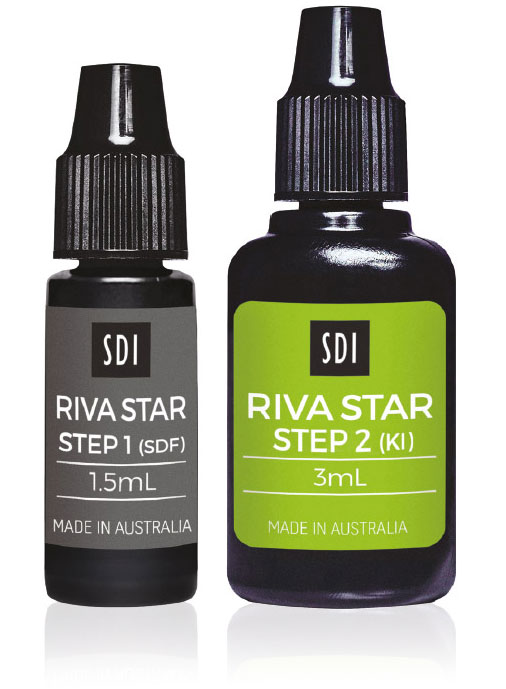This patient attended with caries affecting her upper right premolar [14]. There was no history of pain and there were no occlusal or parafunctional factors. This procedure was part of her overall restorative and preventive treatment plan. Here is the case summary of management and workflow related to the use of the materials.

This patient sought treatment to improve the aesthetics without causing unnecessary damage to the remaining tooth tissues. Tooth surface loss and slight imbrication were noted, and a direct restorative technique was deemed appropriate for progression. There were no symptoms, so a direct robust restorative method was the optimal option to preserve as much tooth tissue as possible. There was also a slight imbrication noted between the upper central incisors. All the teeth were assessed as disease-free, there was no known history or clinical signs of parafunction, and the oral hygiene was good.
Clinical stages
A standard restorative tray set-up was used and Super Etch®, Zipbond®, Riva Star®, Riva Light Cure HV® and Luna 2® were chosen as ideal restorative materials for application. Initially, the shade was taken in natural light and before isolation to avoid errors due to dehydration. Local anaesthetic was administered, and the teeth were isolated using a rubber dam.



Once effectively isolated, caries were removed using a minimally invasive technique. This was considered a more conservative approach to help preserve the natural tooth structure.
 Once dried and the cavity had been checked, Riva Star® was applied to the base of the cavity. This is a two-stage application which consists of silver fluoride and potassium iodide. When the two combine, a white precipitate of silver iodide is formed. This has the benefit of conditioning the dentine, reducing sensitivity and it has antibacterial activity to reduce the biofilm.
Once dried and the cavity had been checked, Riva Star® was applied to the base of the cavity. This is a two-stage application which consists of silver fluoride and potassium iodide. When the two combine, a white precipitate of silver iodide is formed. This has the benefit of conditioning the dentine, reducing sensitivity and it has antibacterial activity to reduce the biofilm.
The base of Riva Star® was then covered with a layer of Riva Light Cure®. In some instances, clinicians have reported a dark-coloured precipitate forming during this stage. Application of Riva Light Cure® is a simple two-step application directly with a micro-brush. A white precipitate is instantly seen.


The white precipitate is seen here due to the application of Riva Star®. It’s worth noting that Riva Star Aqua® has since been released to reduce the incidence of this, as well as providing an ammonia-free option which eliminates the taste and smell of traditional SDF treatments. The images here reveal a slightly dark colour affecting some areas. This is the colouration that would not occur with Riva Star Aqua®.
Once this step has been completed the tooth restoration is carried out using RIVA Light Cure® for dentine replacement, enamel etching, Zipbond® and direct restoration with the Luna 2® universal composite. This is the ideal workflow for enhanced predictability, but note that Riva Star® is compatible with any composite system.


A 15-second enamel etch was carried out with Super Etch®, and Zipbond® resin was applied and gently air dried before light curing. Luna 2® was then applied to the cavity in increments to replace the deficient enamel and dentine. A single shade (A3) technique was employed, made possible with Luna 2®’s Logical Shade Matching Technology and Chameleon Effect, and care was taken to avoid air pockets. The adjacent tooth [15] was rotated and care was taken to form a good contact which enabled cleansability and reduced the risk of food packing. A sectional matrix system was therefore used to enable this.
Curing was carried out using Radii Expert®, which provides an LED collimated beam for a consistent light intensity for deep restorations. The narrow neck and size of the head enable good access to any restoration site without hand fatigue and ensure even exposure to the material. The light intensity is consistent band evenly distributed which is suitable for all composites (440nm-480nm wavelengths). This low heat emission is also beneficial for pulpal protection.

Dr Jatinder Heer
BDS Lond, MFGDP(UK)
Dr Jati Heer has been working as a general practitioner for twenty-five years, with a career that’s also spanned hospital environments. After setting up the JH Dental Clinic in 2001 he’s been involved in both general dentistry and acts as a referral centre for more complex cases. Dr Heer is an advocate for advancements in dentistry that are backed up by robust clinical research.





